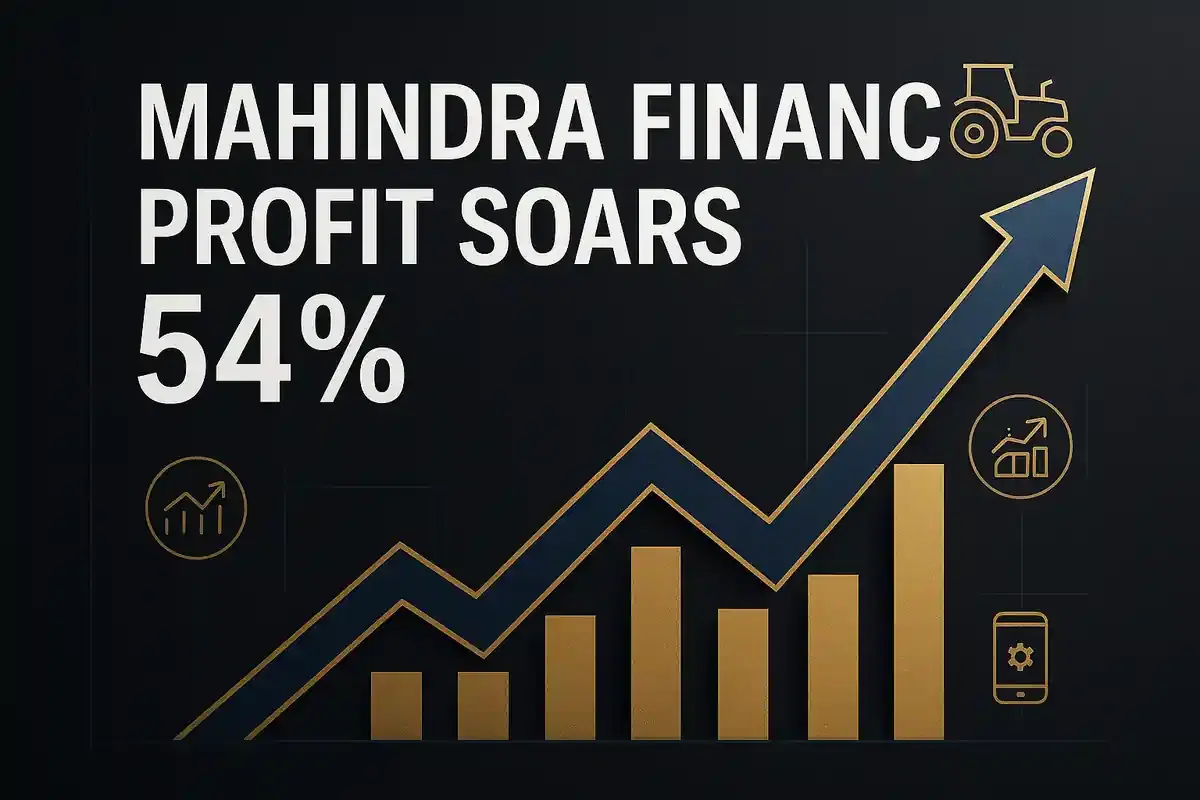Mahindra Finance Posts 54% Profit Jump, Loan Book Grows 13% in Q2
Banking/Finance
|
28th October 2025, 2:42 PM

▶
Stocks Mentioned :
Short Description :
Detailed Coverage :
Mahindra & Mahindra Financial Services Limited announced robust financial results for the quarter ended September 30, 2023. The company's net profit saw a significant jump of 54% compared to the previous year, reaching ₹569 crore. Its loan book grew by 13% to ₹1.27 lakh crore, indicating healthy expansion in lending activities. Overall disbursements increased by 3% year-over-year to ₹13,514 crore.
A key highlight was the 41% year-over-year growth in tractor disbursements, boosted by the government's reduction in GST on tractors to 5%. This surge aligns with a general increase in tractor sales across India. The company maintained strong collection efficiency at 96%, reflecting consistent customer repayment behavior. Net interest income (NII) rose by a healthy 22% to ₹2,423 crore. Asset quality remained within expectations, with Gross Stage 3 (GS3) assets at 3.9% and GS2+GS3 assets at 9.7%.
Mahindra Financial Services reaffirmed its leadership in tractor financing and is a major player in financing various vehicles. A strategic priority for the company is diversification beyond vehicle financing, evidenced by a 33% year-on-year growth in its non-vehicle finance portfolio. The MSME sector, particularly micro and small segments, saw its asset book expand by 34% to ₹6,911 crore, driven by secured offerings like Loan Against Property (LAP). The company also reported encouraging adoption of its new digital insurance portal and steady growth in its leasing business.
Impact This news indicates strong operational performance and strategic execution by a significant financial services company, which is positive for investor confidence in the sector. The growth in tractor financing is also a positive indicator for the rural economy. Rating: 8/10
Difficult Terms: * Net Profit: The profit remaining after all expenses, taxes, and interest have been deducted from revenue. * Loan Book: The total amount of money a financial institution has lent out to its customers. * Disbursements: The act of paying out money, especially a loan, by a financial institution. * GST (Goods and Services Tax): A consumption tax levied on the supply of goods and services in India. * Collection Efficiency: The percentage of payments collected on time from borrowers. * Net Interest Income (NII): The difference between the interest income generated by a financial institution and the interest it pays out to lenders. * Asset Quality: Measures the riskiness of a financial institution's assets, indicating the likelihood of borrowers repaying their loans. * GS3 (Gross Stage 3 Assets): Refers to loans that are significantly overdue and considered non-performing assets (NPAs), meaning repayment is highly unlikely. * GS2+GS3: Represents a broader category of loans that are either overdue (Stage 2) or severely overdue/impaired (Stage 3), indicating higher credit risk. * NBFCs (Non-Banking Financial Companies): Financial companies that offer banking-like services but do not have a banking license. * MSME (Micro, Small and Medium Enterprises): Businesses classified based on their investment in plant and machinery and annual turnover. * Loan Against Property (LAP): A secured loan where individuals or businesses borrow money by using their property as collateral. * Stage 3 Assets: Financial assets that have experienced a significant increase in credit risk since initial recognition, indicating a high probability of default.